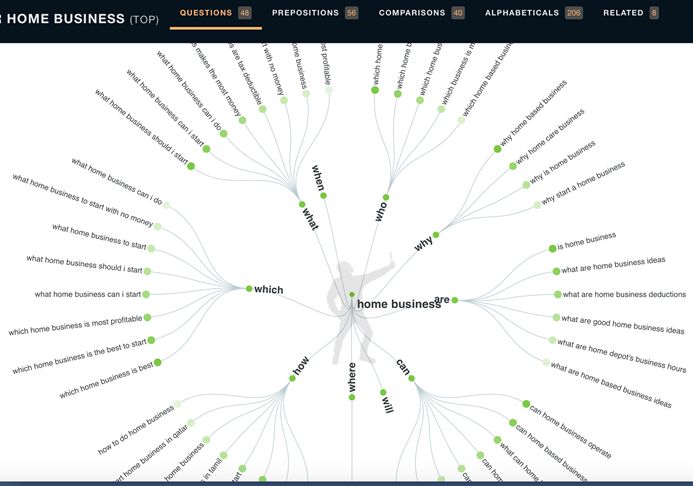2. What They Really Meant: Search Intent
One of the most important factors to consider in every aspect of your SEO content building process from here on out is called “search intent.”
Understanding what users want, also known as “user intent,” has now become a critical factor in organic search positioning. From 3.8 million searches per minute, Google has been gleaning significant insight into what a user is actually thinking when they type in that search box.
Using information such as how long a user stays on a given website (dwell time) and if they click through pages (CTR) or back out immediately (bounce rate), artificial intelligence (AI) is able to instantly analyze and serve up relevant content for a specific search with increasing accuracy.
Search intent is basically determining the main goal a user has in mind when searching. The most common intentions are to find information, review a company website, find out how to get somewhere or to make a product purchase.
Users generally use commonly phrased questions such as “how to,” “what is,” ”where are,” “is there,” etc. This is also known as semantic search.
Google’s algorithm is finely tuned to analyze the psychology behind a query to determine what the user really meant.
Search engines identify supporting context words (latent semantic text) that are typically used together to understand how they interact with each other to alter the intent of the search.
When queries are asked with different semantic text such as: “buy latest iPhone” or “compare Apple iphones” the former is assumedly searching to make a purchase, thus Google will serve up shopping websites first. The latter is seeking information so Google will show “knowledge panels” and comparisons at the top of the SERP (search engine results page).
Is your users intention is to purchase an item, get directions, learn something or find a new vacation destination? Let’s give them exactly what they are searching for, exactly how they are looking for it.
Latent semantic indexing (LSI) is essentially Google recognizing phrases that are linguistically related to the main topic of your page. They help Google understand the deeper contextual information about your page to more accurately match a query.
It’s much more vital for your website pages to maintain rich content around a main topic more so than a single specific keyword as it was in the past.
STEP 1:
Do Your Research
You’re competing against millions of pages, so you’re going to need get specific and creative.
Keyword research is the critical process of finding primary and semantic keywords and supporting phrases that have a balance of high traffic volume yet not as much competition so that top positions are realistically achievable.
It is vital to include relevant niche and long-tail keywords throughout your content along with supporting context and conversational-like questions (semantic search or natural language processing).
We will get specific on how to interweave these phrases into your content most effectively in Chapter 9.
For now, you will want to begin building your library of primary keywords, long-tail keywords and latent semantic phrases, questions and answers.
There are a number of tools that can help you find valuable, relevant keywords and phrases.
BASIC TOOLS:
1. Google Auto-Suggest
The easiest and fastest way to do basic keyword research is to use the Google auto-suggest (also known as auto-complete) feature that’s built right into the Google search bar.
Simply type your keywords and questions in as you normally would when searching for something yourself. Search specific questions you would ask as your primary client/customer/prospect.
Google provides a drop down list of similar questions that will show you the most popular searches related to your topic. This is an instant starting point to begin generating a keyword/keyphrase list for further analysis.
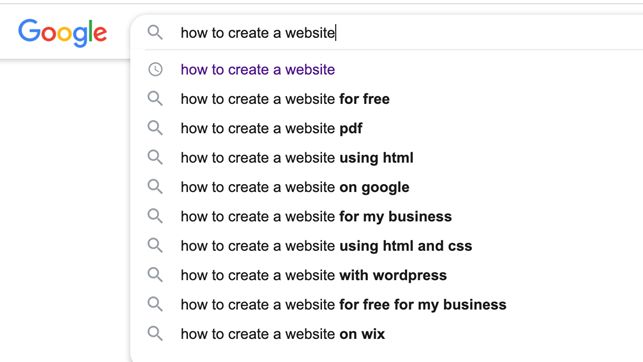
Now, scroll to the bottom of the search results page. Here you will find some hidden gems that show related searches in long-tail and semantic search format.
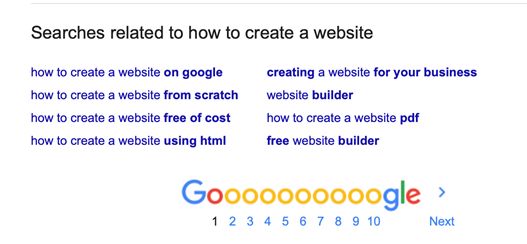
ACTION ITEM: Be sure to start a new document or spread sheet to begin copying these phrases and ideas so you can quickly reference them when creating new website content. You will refer to this often and keep building on it as you get valuable insight over time as to how your audience is reacting to your content.
2. Keyword Researcher
A tool specifically geared for finding thousands of long-tail keywords fast. Long-Tail Keyword Researcher. ( https://bit.ly/3i40z9r )
3. LSIgraph
A fantastic tool to instantly see more obscure yet relevant questions. Simply enter a question and a myriad of related latent semantic indexing (LSI) phrases for your topic will appear.
You can see from the example the modifiers of will, why, are, etc. are often used in search. Use these exact phrases sprinkled throughout your content in a natural, conversational way.
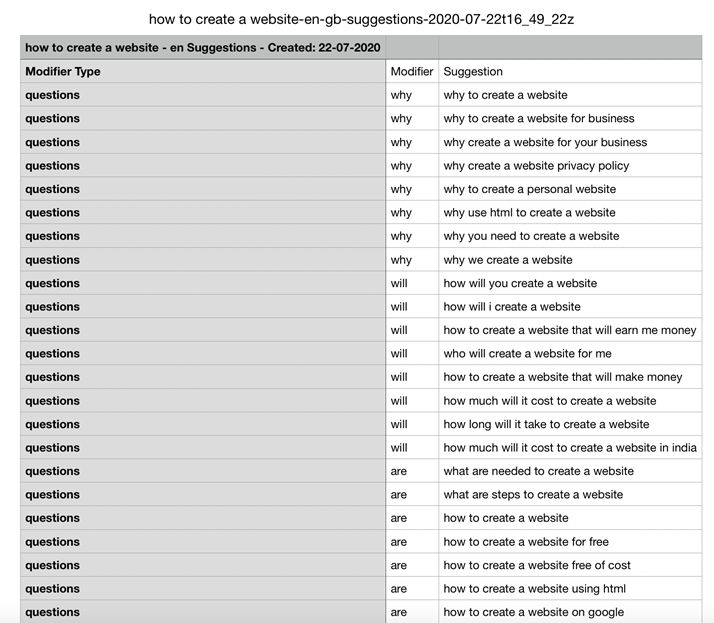
Asking question in different ways with more specific modifiers will add weight to that particular keyphrase, making your page more likely to rank for that specific topic and may even be featured in the “knowledge panel” at the top of information-based results. http://lsigraphi.com
ADDITIONAL TOOLS:
1. UberSuggest, Ahrefs , Moz
Each of these 3 tools offers very similar features along with a community of support and learning resources. Every SEM professional will use at least one or two of these methods for deep keyword insight. All of these tools will provide a great deal of information about search volume vs. competition, backlinks, competitor keywords and rankings, page authority and much more.
You will find the monthly volume of searches for your particular keywords and the cost per click for paid advertising, providing an overview of the difficulty of ranking for particular keyphrases. You will also see a list of what pages are ranking for that topic which should help you generate ideas on what kind of content you will need to create to be competitive.
The higher the volume and competition, the more challenging it is to get to the top of search results. Your goal is to find keywords that balance a decent amount of search volume vs. lower competition.
Each are easy to use but are geared toward professionals, so there is a bit of a learning curve and there is typically a cost involved. Each are free to some degree, either with limited information or with a time limit. ahrefs.com offers a 7 days for $7 plan which is an inexpensive way to get a sophisticated analysis of your potential keywords so you know exactly how to focus your content development.
2. soovle.com
Instantly view the most popular search phrases related to your keywords on multiple platforms at once including Wikipedia, Yahoo, Amazon, Google, YouTube and Ask. Very cool, helpful, free and fast.
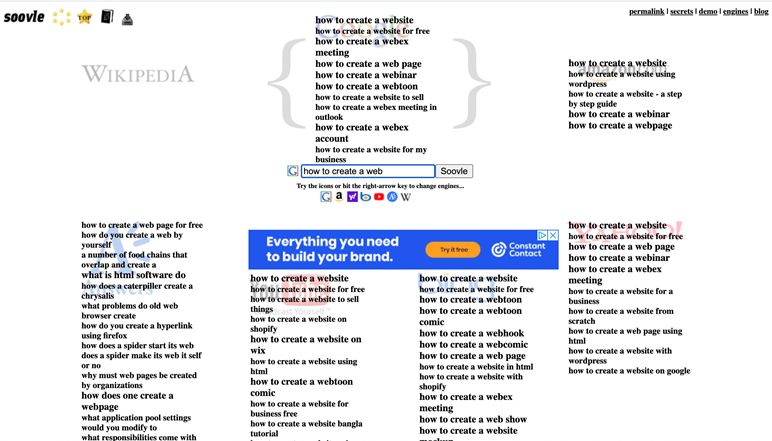
3. AskthePeople.com
Offering a treasure trove of ideas for semantic terms, Ask The People shows you all the questions users ask about your topic, for free. Simply enter a couple of keywords and you will get a visual and downloadable report of a wide variety of associated phrases to add to your keyword library, making it extra easy to begin building your keyword/phrase spreadsheet.
